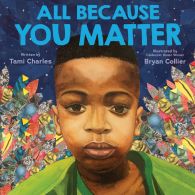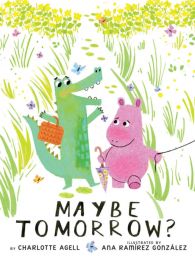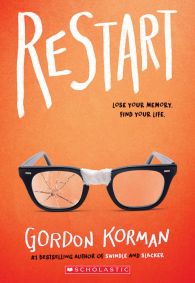If your eyes glaze over when you look at your bookshelves, at home or in the classroom, it could be time for a library transformation.
Maybe you have finished reading all of the books, or perhaps they have been collecting dust… Earlier this year I commented on the concept of library agility for “What Teachers Want in Children’s Books”, part of the Teacher & Principal School Report: 2nd Edition (TPSR). Agile collections and services can rapidly respond to the changes in how students access libraries, as well as their evolving reading interests. Either way, the return to school is a great time to audit your home or classroom library collection, weed, and reorganize the resources in them so that kids have access to the right books at the right time.
Make space for social & emotional reading
First of all - yes, you have to weed. There is a finite amount of space on a bookshelf, just like there is in a clothes closet. Even if the intention is to grow your library collection, it is still important to prune as you go; and age, usage, and condition are three factors to take into consideration for weeding (or keeping!) a book. Place books that are ready for a second life in a little free library, and lend or give one that you enjoyed in the past year to a friend, family member, colleague, teacher or classmate. Some of my most treasured reading experiences come when someone not only recommends a book to me, but places it in my hand.
It is important to create space in order to add new materials to add to the collection that address social emotional learning and relate to the life experiences that kids may have seen over the past year, ranging from personal grief to violence in the news cycle. According to TPSR, less teachers are finding that their classroom libraries meet the social and emotional needs of their students.
“Among the top two characteristics of reading materials teachers need are books that serve as mirrors where their students can see themselves in the characters and stories, and books that are windows into the lives and experiences of others—each increased 20% over the figures reported in winter 2020.”
Auditing the library collection in relation to the S.E.L. core competency areas, as defined by the Collaborative for Academic, Social, and Emotional Learning (CASEL), enables you to set goals to be more agile and provide materials that meet specific needs:
Self-awareness: “The abilities to understand one’s own emotions, thoughts, and values and how they influence behavior across contexts.”

Social Awareness: “The abilities to understand the perspectives of and empathize with others, including those from diverse backgrounds, cultures, and contexts.”

Self-management: “The abilities to manage one’s emotions, thoughts, and behaviors effectively in different situations and to achieve goals and aspirations.”

Relationship Skills: “The abilities to establish and maintain healthy and supportive relationships and to effectively navigate settings with diverse individuals and groups.”

Responsible Decision-making: “The abilities to make caring and constructive choices about personal behavior and social interactions across diverse situations.”

Visit the Scholastic Bookshelf on Instagram
A new tool for tough SEL conversations that is available on Instagram, and it can help navigate dozens of topics. Each subject is introduced with a kids book or magazine article, using the slides of an Instagram post. The final slide includes recommendations for more books and articles on the subject. The Scholastic Bookshelf is a great account to follow for Instagram Live book parties and author interviews, and the page is worth bookmarking on internet browsers and library websites for quick access.
In addition to creating agility around SEL needs, it is critical to consider diversity on a library's bookshelves. TPSR shows that kids, parents and teachers all have a strong desire to see more diverse representation in kids books. Consider representation in terms of the different races, ethnicities, religions, nationalities, mental health experiences and disabilities that are reflected in the collection. To fill the gaps without breaking the bank, try organizing a book swap this fall as one way to infuse new and more diverse materials into your collection and those of others. While I tend to forever keep picture books, comics and African American history, there are piles of chapter books and novels that I will not open again after enjoying them. It can be hard to give away a book that you really liked, but it can also be an example of loving something so much that you set it free. Once you let go, the reward is the shared reading experience and discussion that you’ll have with the person you give a book to. Book conversations centered on titles that have diverse representation can be particularly meaningful ways to share perspectives and practice empathy.
New year, new library
Finally, before you reshelve your renewed library collection, clean (and perhaps paint) each bookshelf. The books themselves may need to also be cleaned. A dust cloth can suffice, but in extreme cases professionals will use vacuums with HEPA filters on the collection itself. For details, check out the Stacks Cleaning Procedures outlined by the University of Washington Libraries. As far as painting is concerned, book carts and book shelves can be decorated with landscapes, book covers, fictional characters, geometrical shapes and quotes about reading. Reorganizing the books on the shelves can also give your collection a new life:
-
Alphabetize by author or title - this is one of the most common ways to put books in order, particularly fiction. In the Scholastic “gold star” collection of new and notable books, located in our browsing library, the books are organized by title and series. This is because when someone comes into the library in a rush looking for a book, they usually ask for it by title.
-
Color code your collection - this popular method of organizing a personal book collection is often disregarded, but we librarians can usually identify a book by color/cover. I keep the books on the shelves behind me in video meetings organized by color, many of which are recent publications. It makes an interesting background, and when one of our recent titles is mentioned in a meeting I can spin around in my chair and pull it off the shelf quickly.
-
Create subject/genre sections or spine labels - these can be hard for titles that fit into multiple categories, like historical fiction and fantasy, but it helps readers who are browsing to find like materials. One student might decide to read every science fiction title, while another may not realize how many joke books exist until they are all kept together.
-
Sort by date of publication - while this may not be the norm, it is how we organize the Scholastic archive! Our historical collection is actually organized by ISBN. The first aisle are pre-ISBN (books published before international standard book numbers were invented), and then the next aisles go from 0590-00000-0 to 0590-99999-9, one hundred thousand items from the 1960s, ‘70s, and ‘80s. We have several ISBNs ranges now, most of which are complete/closed. For us this is a useful way to organize, because when we walk through the archive from one end to the other it is like traveling through time.
-
Horizontal stacks or a vertical lineup - a great debate! Stacking books horizontally makes it easier to read the titles, but harder to shift books around. Covers have the potential to stick together in humid environments, and it is hard to pull a book out of the pile, however horizontal stacks can be more efficient for fitting the maximum number of books on the shelves and dealing with oversize volumes. Creating just one or two horizontal stacks can make the bookcase more visually inviting.
-
Double rows and facing out - in a bookstore these methods are useful for displaying multiple copies of a title, with the surplus right there on the shelf. Double rows can be difficult for browsing in a personal or classroom library, but useful for maximizing space. Facing covers outward improves their chances of being picked up, and with the growth of video calls many people are choosing to set a few books face out on display on their bookshelves. If there is space, clear one entire shelf at eye level to create thematic displays of books. Be ready to replace these titles when they are plucked out of the display and circulate.
Remember, Covid-19 and the experience of remote learning for over a year made the impact of lack of access to school and classroom libraries even more stark. Kids who have read everything they have in a home library are ready for turnover and growth on their personal bookcases, and kids who depend on their teachers for new and interesting reading materials are looking forward to being reunited with classroom libraries. Tending to your personal book collection this fall is a rewarding activity that can be shared with both voracious readers and kids in need of powerful stories, and the agility of your collection may surprise you.



